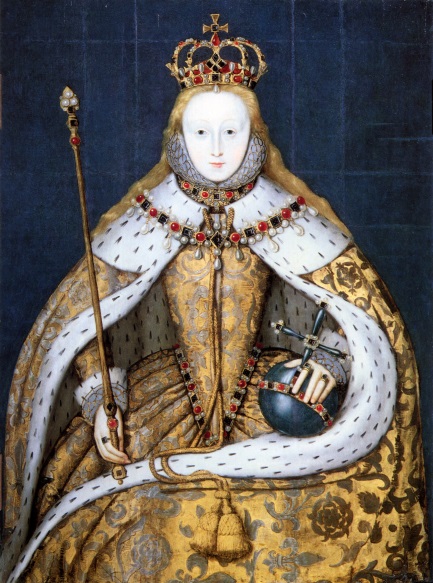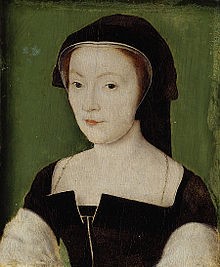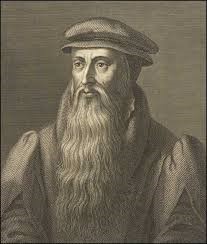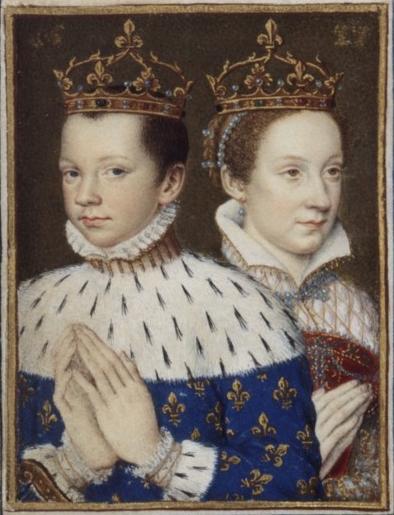William Cecil: Life Story
Elizabeth I’s Chief Councillor
Chapter 7 : Urgent Problems
On 20th November, 1558, Cecil was sworn to Elizabeth’s Privy Council, and took the office of Master Secretary. In addition to the usual oath of office, it is recorded that Elizabeth gave the great charge of his office to Cecil with the following words:
‘This judgement I have of you, that you will not be corrupted with any manner of gift and that you will be faithful to the state, and that without respect of my private will you will give me that counsel that you think best. And if you know anything necessary to be declared to me of secrecy, you shall show it to myself only, and assure yourself I shall keep taciturnity therein, and therefore herewith I charge you.’
Their political partnership was to last for forty years – not without differences in many areas of policy – but ultimately it resulted in the forging of a nation state that truly brought England from the middle ages, to the discernible parent of the United Kingdom of the twenty-first century.

On Elizabeth’s succession there were four major problems facing her Government: the war with France, the rebellion in neighbouring Scotland, religion and the succession. Cecil had decided views on all of these, generally more radical than Elizabeth’s.
First, there was the ongoing war. England was Spain’s ally in the ongoing round of the interminable Franco-Spanish war that had begun in the 1490s. Although the current outbreak had brought initial success for them, at the Battle of St Quentin in 1557, this had been followed up by the loss of Calais and the decided coolness of Spanish efforts to help recapture it.
France and Spain finally made a lasting peace at the Treaty of Cateau-Cambresis, and, although whilst Mary lived, her husband, Philip II tried to include the return of Calais as part of the deal, once he was no longer King of England, he had less interest in pursuing it. England was in no financial position to prosecute the war alone, and had little option but to join in the treaty as agreed. Cecil saw this as evidence of the Catholic powers putting their differences aside to isolate Protestant England.
The nightmare scenario he envisaged was the use of Scotland by France as a back-door into England. The King of France’s daughter-in-law was Queen of Scots, and, in the opinion of Catholic Europe was the rightful Queen of England, following Mary I’s death. Now it was no longer preoccupied with Spain, France would invade on two fronts.
The solution to this, in Cecil’s view, would be for England to support the Lords of the Congregation. This was a group of Scots nobles who, largely under the influence of John Knox, had converted to Protestantism, and who were no longer as convinced as they had been in the 1540s that France was a friend, and England an enemy.

The Lords rejected the authority of the Queen Regent, Marie of Guise, who had called for French troops to regain control. Cecil was in constant communication with the Lords and was certain that England should send money and men to help them.
Unfortunately, he was having trouble persuading Elizabeth of the merits of supporting rebellious subjects. Throughout her reign Elizabeth hesitated to support rebels against their lawful prince. For her, solidarity amongst monarchs was more important than solidarity with her co-religionists, especially as the more vocal Protestants like Knox had far more extreme religious beliefs than hers. For Cecil however, the opposite was true. He believed, and would continue to try to persuade the Queen, that England should support Protestant rebels against their Catholic masters.
In 1559, John Knox sought a safe conduct to travel through England. Elizabeth trenchantly refused. Not only was he encouraging rebellion, he was also undermining her own position as Queen with his diatribes against women rulers. Knox had loudly criticised Marie, and also the late Mary I, in his ‘First Blast of the Trumpet against the Monstrous Regiment of Women’ excoriating female rule.

The offensive language of the ‘First Blast…’ was an affront to Elizabeth. Every attempt of Knox to dig himself out of the hole he had created by claiming that he had not meant to offend her, and that, provided she admitted that she was an exception, with a special dispensation from God from His usual laws against women rulers, then no-one would be happier to maintain her authority than himself. On the other hand, if she believed that she was Queen because of custom and law, ‘her ingratitude [would] not long lack punishment.’
He asked Cecil to share his views with Elizabeth. One can only imagine Cecil’s reaction to such inflammatory language. He declined to answer Knox and certainly didn’t communicate his views to Elizabeth. Nevertheless, Cecil was determined to help the Scots Lords and under his control, the Privy Council wrote encouraging words, but there was still Elizabeth to persuade.

Then the Queen of Scots committed what, with hindsight, was probably the greatest mistake of her life. Only sixteen, newly married and crowned as Queen of France (Henri II having died in July 1559), she accepted the Catholic, French view that, in law, if not in fact, she, Mary, was the rightful Queen of England. She quartered her arms with those of England and she and her husband called themselves Kings of France, Scotland and England. For Cecil, this was proof positive that Mary was Elizabeth’s bitter enemy, and, for the rest of Mary’s life, he sought every possible means to undermine her, and eventually, dispatch her.
Elizabeth, not yet secure on her throne, although furious at Mary’s action, still had to be persuaded to act. Initially, Cecil failed to persuade his colleagues on the Council to do more than make encouraging noises: not even his brother-in-law, Nicholas Bacon, was convinced. It was not until they heard that a French fleet had put to sea in support of the Scottish Regent that the whole Council recommended to Elizabeth that she support the Lords. The Queen, however, rejected their advice out-of-hand. It was only in February 1560, after months of persuasion that Elizabeth agreed to give the Lords military assistance.
Cecil travelled north to Edinburgh, where he agreed the Treaty of Edinburgh with the Lords. From the point of view of Cecil and the English, the Treaty was a triumph. From the perspective of the legitimate government of Scotland, Queen Mary and her husband, it was quite unacceptable. The Treaty provided that, if Mary failed to ratify its terms, the English would be free militarily to protect the Protestant religion in Scotland, and prevent French intervention. It also acknowledged Elizabeth as the legitimate Queen of England. Mary never ratified the treaty, but the clauses relating to the withdrawal of French troops were fulfilled.





